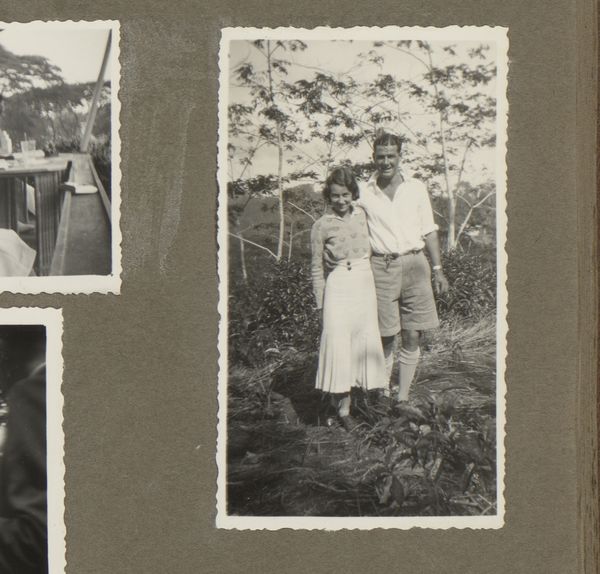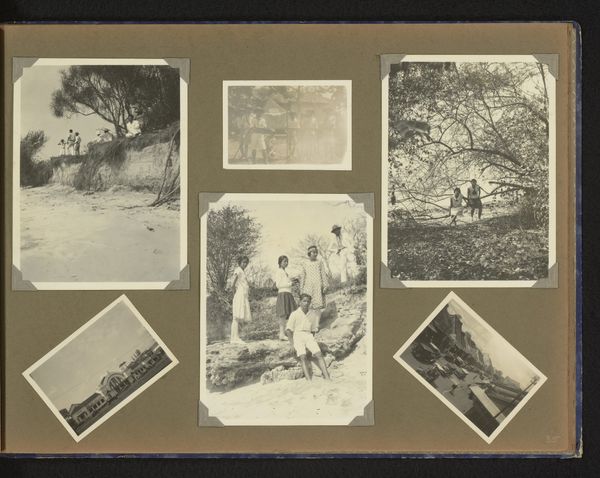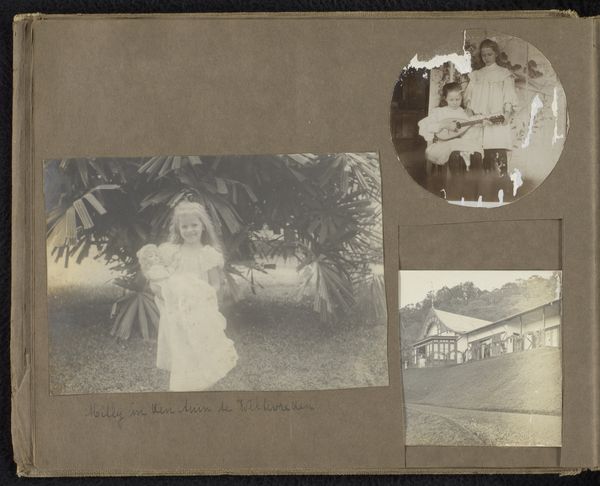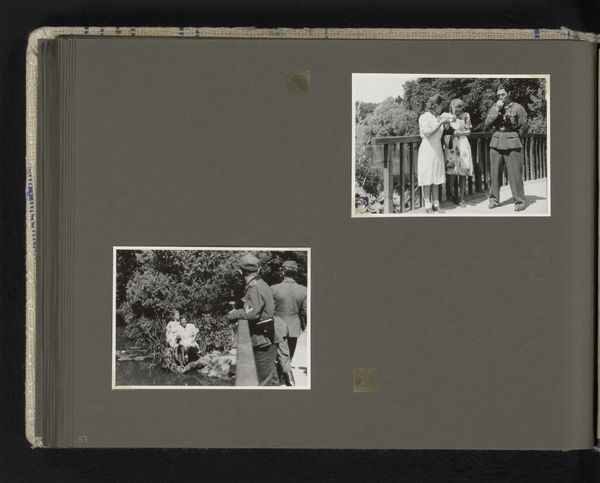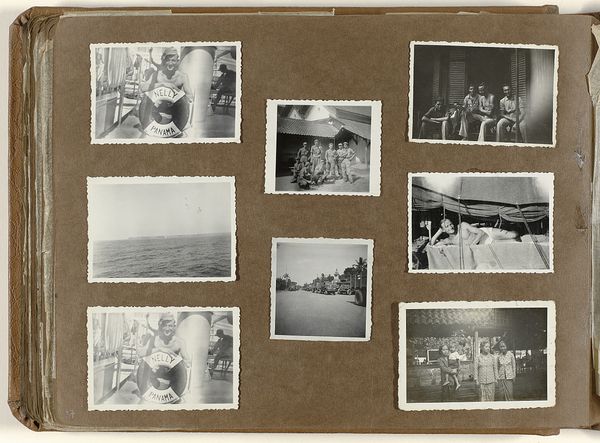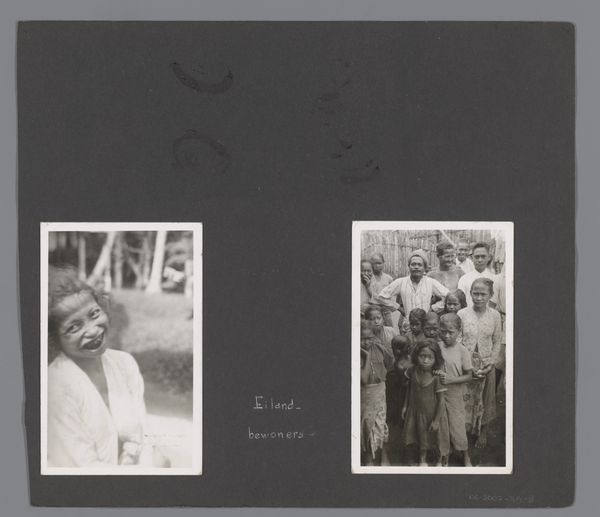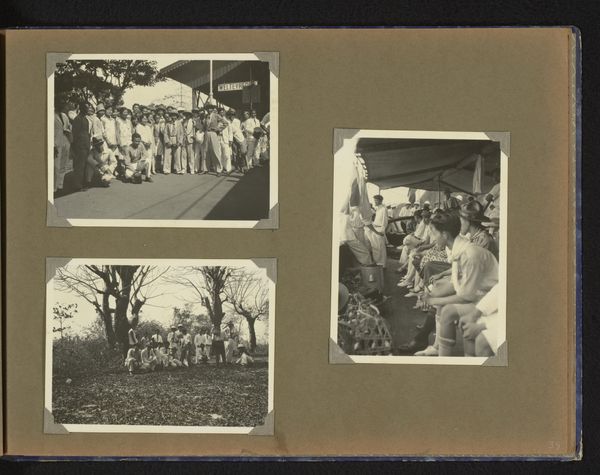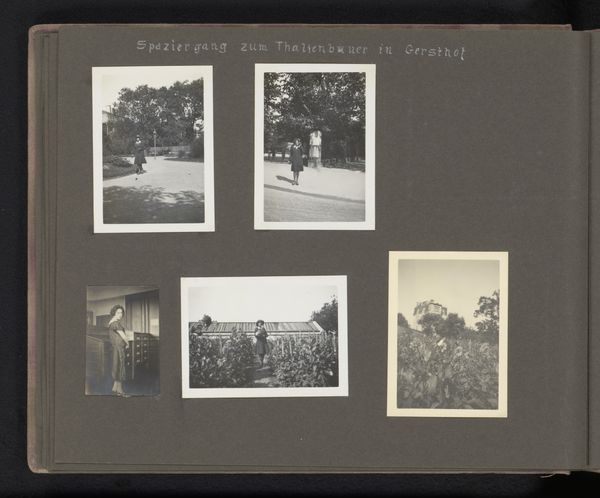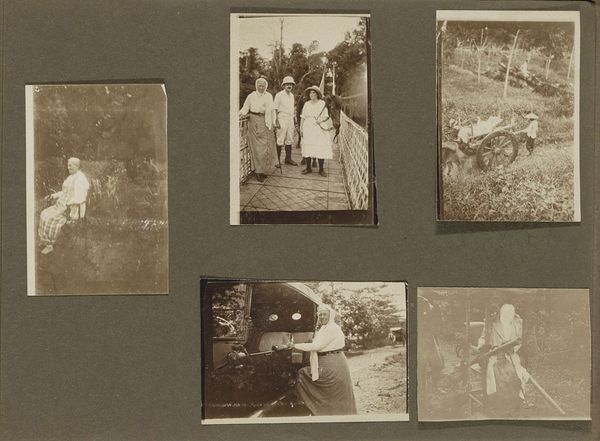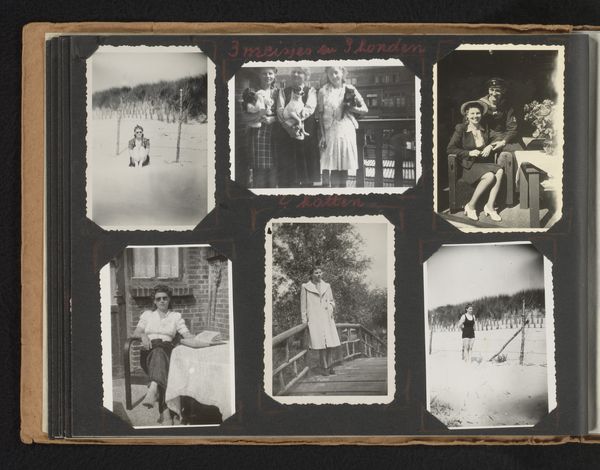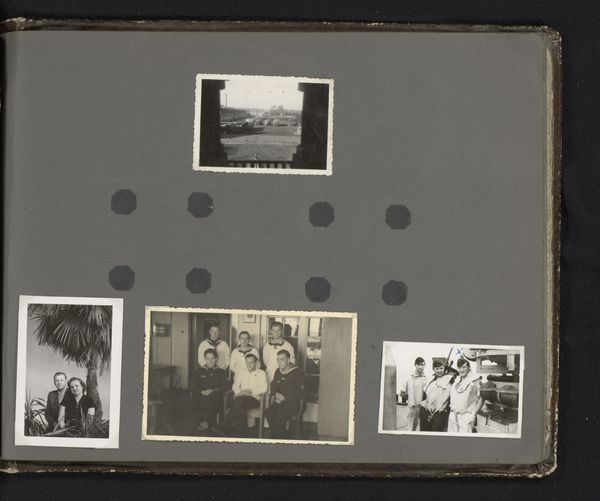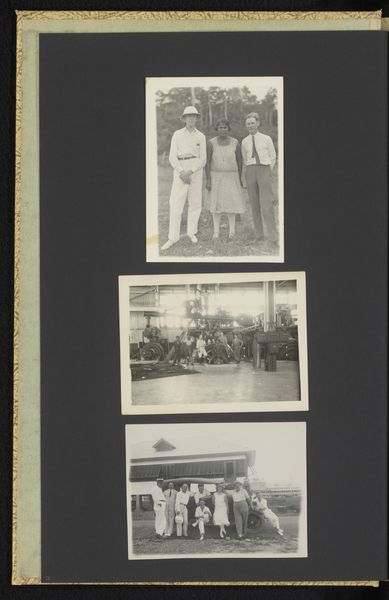
Eugen Wachenheimer en zijn echtgenote Else Wachenheimer-Moos in bosrijke omgeving met bevriende familie, juli 1932, Albeck (Oostenrijk) 1932 - 1937
0:00
0:00
photography, gelatin-silver-print
#
portrait
#
muted colour palette
#
landscape
#
photography
#
group-portraits
#
gelatin-silver-print
#
muted colour
Dimensions: height 60 mm, width 85 mm, height 164 mm, width 210 mm
Copyright: Rijks Museum: Open Domain
Editor: This is a gelatin silver print, an untitled photograph featuring Eugen Wachenheimer, his wife Else, and their friends in Albeck, Austria, dating from around 1932-1937. It’s presented within an album page alongside landscape views. It all feels so informal, intimate. What stands out to you? Curator: Seeing this family album page, especially considering its historical context, is profoundly moving. The idyllic scenes belie the rapidly approaching storm for Jewish families in Europe. Do you notice how carefully each image is placed and captioned? This suggests an intentional act of preserving memories, of staking a claim to a normal life even as those claims were being systematically dismantled. Editor: Yes, the captions do seem important, as though someone wanted to be very clear about who was present and where they were. So, in that sense, it is kind of a political act to document that experience? Curator: Precisely. Photography, in this instance, transforms into a quiet form of resistance. Consider the choice of the wooded setting, almost like a hidden sanctuary. What public narratives about Jewish life were circulating at the time, and how does this image push back against them? Editor: I hadn't thought about it like that. It’s like they're creating their own narrative, one of normalcy and connection, to counteract the negative images being propagated. Curator: Exactly. This album page becomes a powerful testament. What appears on the surface as a simple family memento holds within it layers of social and political defiance. It humanizes the victims of the Holocaust and reminds us of the importance of visual records. Editor: That’s so interesting. Now I see this piece so differently. The act of assembling these happy moments into an album gains so much importance! Curator: Agreed, seeing this photographic record prompts reflections on memory, identity, and the quiet power of personal archives in the face of overwhelming historical forces.
Comments
No comments
Be the first to comment and join the conversation on the ultimate creative platform.
